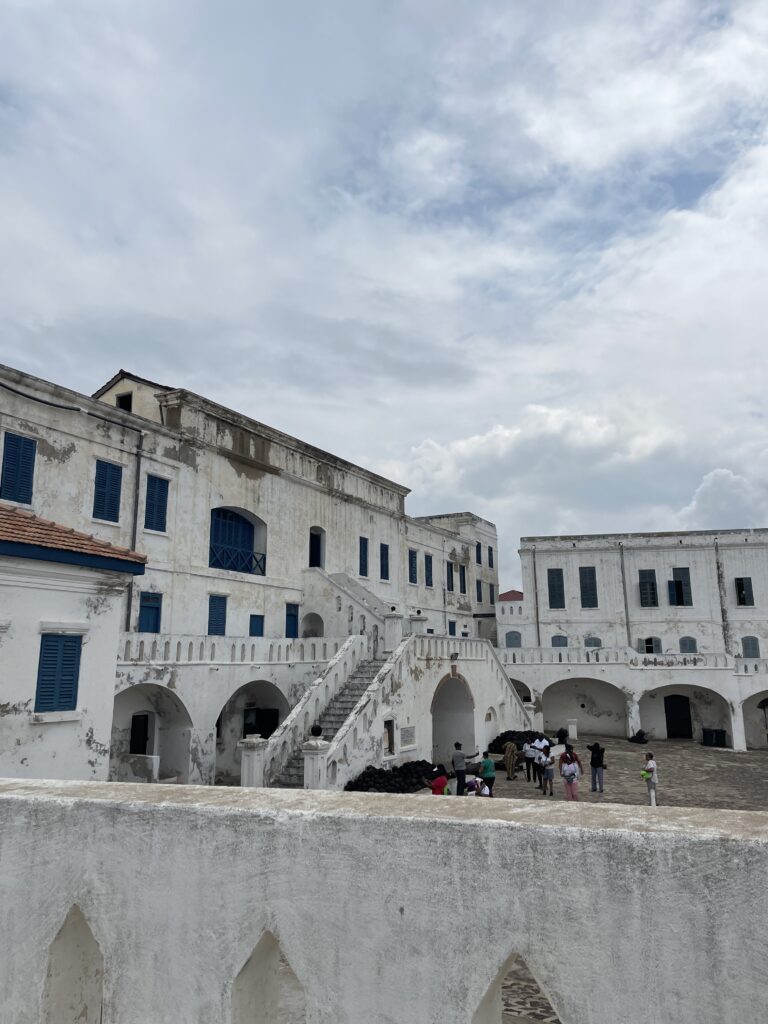We’ve been in Ghana for two weeks now, and we’re coming to the end of our trip. Our last stop before we head back to the Capital city of Accra and head home is Cape Coast, Ghana, a beautiful coastal town on the Gulf of Guinea. The scenery is beautiful, with many beach resorts littered along the coastline. But Cape Coast carries a dark history as well, as it played a large role in the Transatlantic Slave Trade.
Cape Coast Castle, originally built by the Swedish in 1653, was one of 40 different slave castles used by Europeans in order to contain and transport slaves to the Americas and the Caribbean in the 17th through the early 19th century. Our group had the honor of touring this hallowed building, and we were all heavily affected by our experience. As the tour guide took us through rooms, dungeons, and doors of no return, we took in every word and listened to carefully to the stories he shared. He spoke on the trauma shared by West Africans due to the slave trade centuries ago, something none of us had considered much being Americans. It was a one in a lifetime, emotional experience that brought on feelings of loss, guilt, and sadness, but also strength, love, and community as we reflected on why we preserve such a dark memory in history.
It hurts to see the wrongdoings of human beings on such a personal level, and it wasn’t easy to get through that day. But as our tour guide told us, we heal through communication and education. When history is ignored, it is doomed to repeat itself. Cape Coast Castle is a living reminder of the horrors that once were, and the impacts that people across the world still feel to this day. But Cape Coast Castle is also a place of learning and hope for the future, as we preserve the history that once was and learn from it. We can’t go back in time and change what has happened, but we can foster communication and cooperation to make the world better for everyone, every day.

